Effective cultural programming for Native foster children is lacking, foster parents say
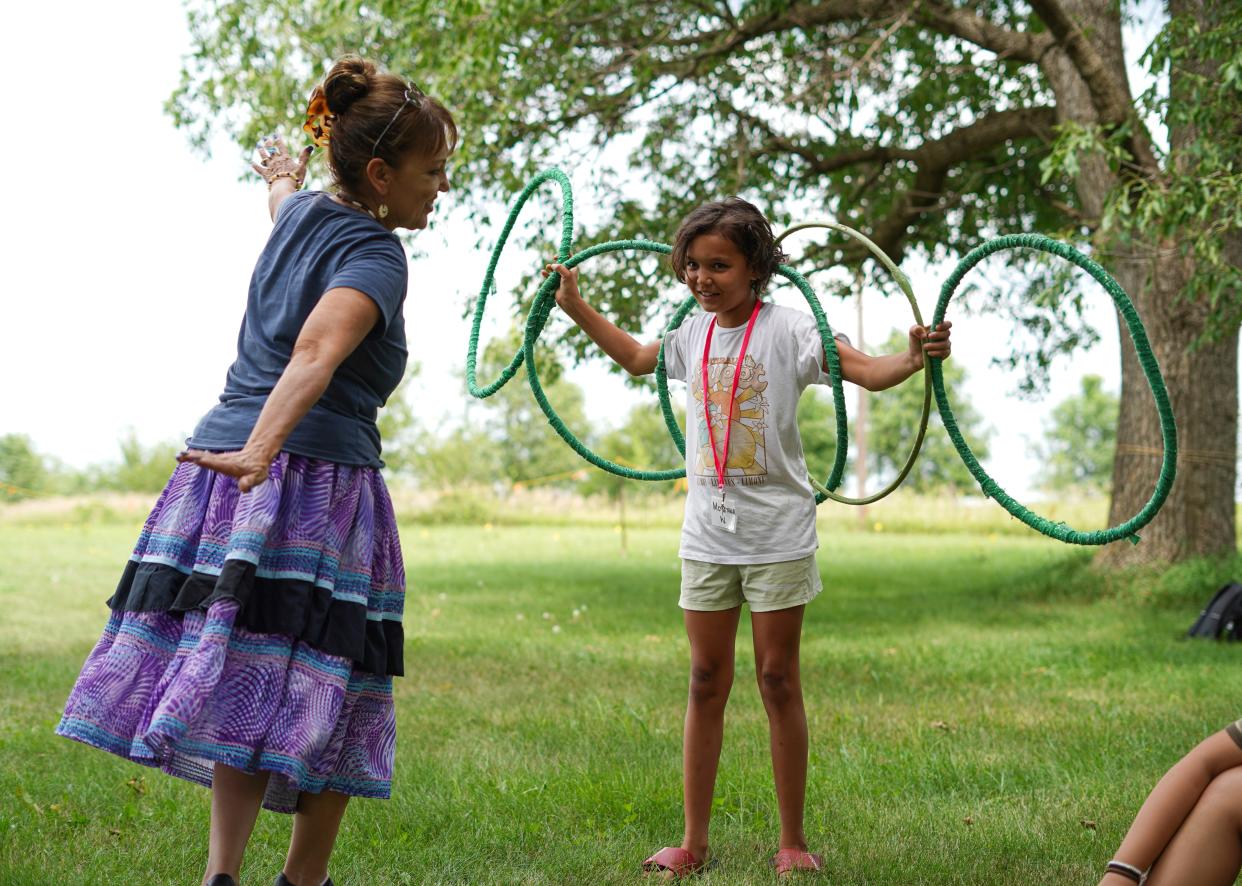
Editor's note: This is the eighth piece in a six-installment series about Native American children in South Dakota's foster care system, produced in partnership between the Argus Leader and South Dakota Searchlight.
Jennifer Johnson wondered if her boys hated her.
She and her husband fostered and adopted the three brothers — all under 3 years old — in the early 2000s. The couple provided a safe, stable and loving home for the children, she recalled, but it seemed like the boys would try to sabotage their relationships with their adoptive parents at every turn.
They’d steal, or they’d lie, or they’d hide.
They didn’t trust each other and they didn’t trust their adopted parents. The two eldest boys were placed in four foster homes before being officially adopted by the Johnsons — none of the brothers had lived under the same roof until the Johnsons fostered them.
They tested their family’s limits, anticipating that it’d break apart and they’d be sent somewhere else — just like before.
“It’s very damaging,” Johnson said, explaining children in foster care often develop attachment disorders, which can later turn into anxiety and behavioral issues. “You have situations where kids go into foster care and they’re torn away from parents and homes they’re attached to. That’s traumatic, and they don’t understand it.”
Shortly after adopting the boys, the Johnsons moved to Kansas City, hundreds of miles from the Pine Ridge reservation in western South Dakota, where the brothers are enrolled tribal members. Johnson and her husband are white, and their sons barely know their biological relatives.
The instability of the boys’ early childhood still affects their lives as adults, though they are happy and doing well, Johnson said. They fear change and find it hard to adjust to unfamiliar surroundings, like college or a new job. They’ve struggled with their identity, just as other children who’ve been through the foster and adoptive system do.
“Now my sons are grown, and they feel like they are strangers. They are Native, they’re enrolled members of the tribe, but they are so disconnected,” Johnson said, describing her sons’ connection with their tribe. “And that is directly as a result of a white family adopting them.”
An Argus Leader/South Dakota Searchlight investigation examined the issues Native families and children face inside South Dakota’s child welfare system. Native American children accounted for nearly 74% of the foster care system at the end of fiscal year 2023 — despite accounting for only 13% of the state’s overall child population.
With just 11% of foster homes being Native American families, most of the children are placed in non-Native homes.
Such removal and placement can disrupt a child’s sense of security and identity, leading to mental and physical health problems throughout their lifetime. But keeping a child connected to their cultural beliefs and practices are protective factors after they are separated physically from their home.
Children who are removed from their homes and placed into foster care are more likely to have post-traumatic stress disorder, depression and anxiety disorders; they are more likely to be incarcerated, homeless and die earlier.
Experts say these lasting effects are due not only to the trauma that led to foster care placement, but also the removal of children from their families, the severing of cultural connections and their loss of identity.
The state does not require foster families or adoptive families to take in-person cultural or traditional parenting classes, which has failed to keep children connected to their cultures, Johnson and other foster parents said.
Potential foster parents are required to watch an online panel discussion about the importance of culture, and the federal Indian Child Welfare Act is “explained to all families” before they’re required to sign a statement of understanding, according to the state Department of Social Services.

Other states, such as Oklahoma, require each foster parent go through ICWA training and offer cultural programming for foster children.
Johnson, who attended graduate school for cultural anthropology, said South Dakota is obligated to facilitate access to cultural connections for foster children. She said cultural parenting classes weren’t available to foster parents in the early 2000s.
“When the state takes custody and then doesn’t act in the full best interest of the child, in that way, it is destructive,” Johnson said.
Foster children more likely to die before 60, studies show
Children are removed from their families and placed into foster care in an attempt to protect them from adverse childhood events (ACEs), types of abuse and neglect including parental substance abuse, physical abuse, domestic violence and incarceration.
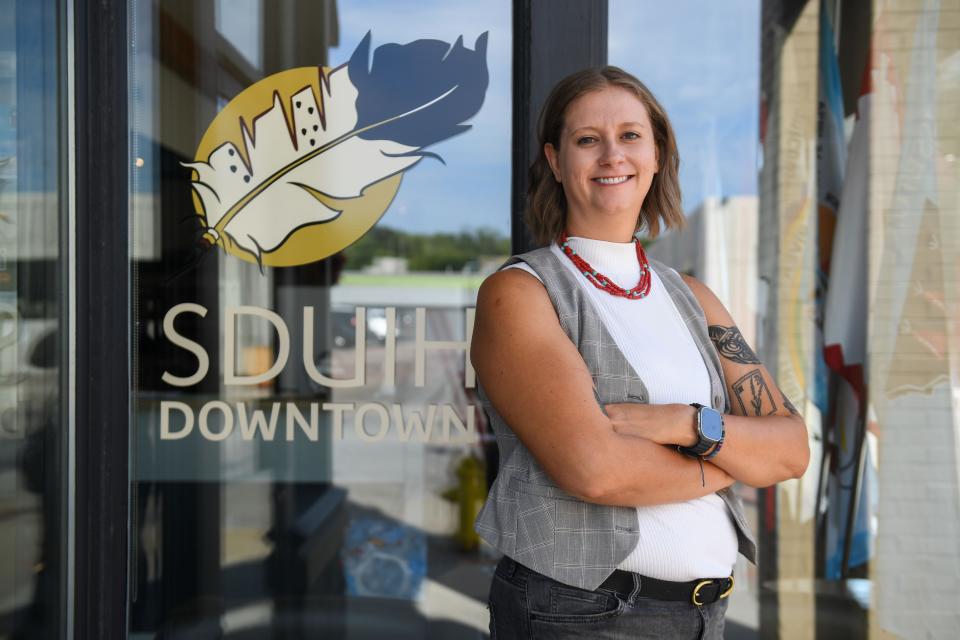
But not understanding why they can’t return to their loved ones is an adverse childhood experience in itself, said Michaela Seiber, CEO of South Dakota Urban Indian Health in Sioux Falls.
The emotional and psychological harm caused by removal can lead to deep-seated feelings of rejection and abandonment, attachment disorders, substance abuse problems, aggression, learning disabilities and suicidal tendencies.
The more ACEs a child experiences, the more it can affect their mental and physical health — so much so that adults with high ACE scores may die earlier than their counterparts. But the ACE test doesn't take into account a child's sensitivity to experiencing such events, and it doesn't take into account any protective relationships put into place to shield the child from such stress.
More: ‘Waiting for life to start again’: Family agonizes over parental termination
Increased ACEs may contribute to a cycle of violence as well, Seiber explained. ACEs can impact a child's genes and the way the body handles stress, all of which can be passed down through generations.
"The fact that we are still seeing kids being ripped out of their homes for all different reasons by Child Protection Services and the state when we don't know the outcomes that are going to happen is really scary,” Seiber said.
Cultural connections serve as protective factor, anchor for children
One way to lower a child’s ACE score is to add protective factors or preventative measures, Seiber said. Establishing connections to the child’s cultural background is one way to do that.
A sense of connection to culture is correlated to emotional well-being for Native American foster kids, studies show, whereas mere participation in cultural activities (like attending a powwow but not understanding the importance of drum songs and dancing) had mixed results.
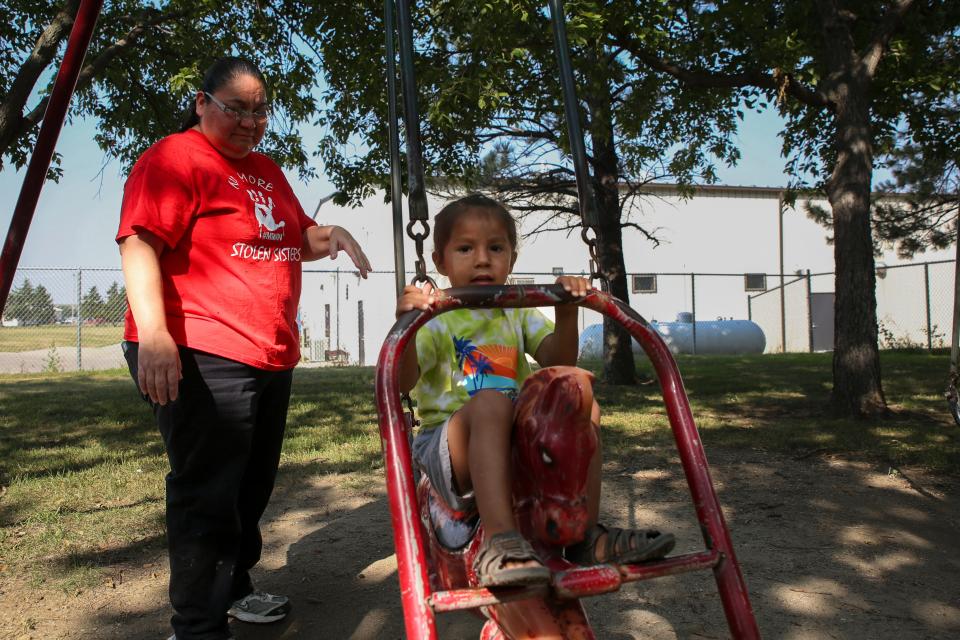
Natasha Eagle Star maintains one of the 98 Native foster homes in South Dakota and lives in Winner, near the Rosebud Indian Reservation. She tells her foster kids to think of her as an auntie, not as a traditional foster mother, to maintain family connections.
"I found that when kids see that we're Lakota, they come out of their shell a little bit quicker while they're in foster care, knowing that they have that connection,” Eagle Star said.
Toni Handboy, a former foster child turned addiction counselor, struggled with drug and alcohol addiction for years after aging out of the foster system. Reconnecting with her spiritual traditions as an adult helped her overcome her addiction.
Handboy left the system 30 years ago but still keeps in contact with her foster mom and siblings. Her foster mother, who is white, currently cares for six siblings from the Pine Ridge Reservation in her Hot Springs home. Handboy explains traditional Native practices while her foster mother has the children in her care, such as not cutting children’s hair unless there’s a death in the family.
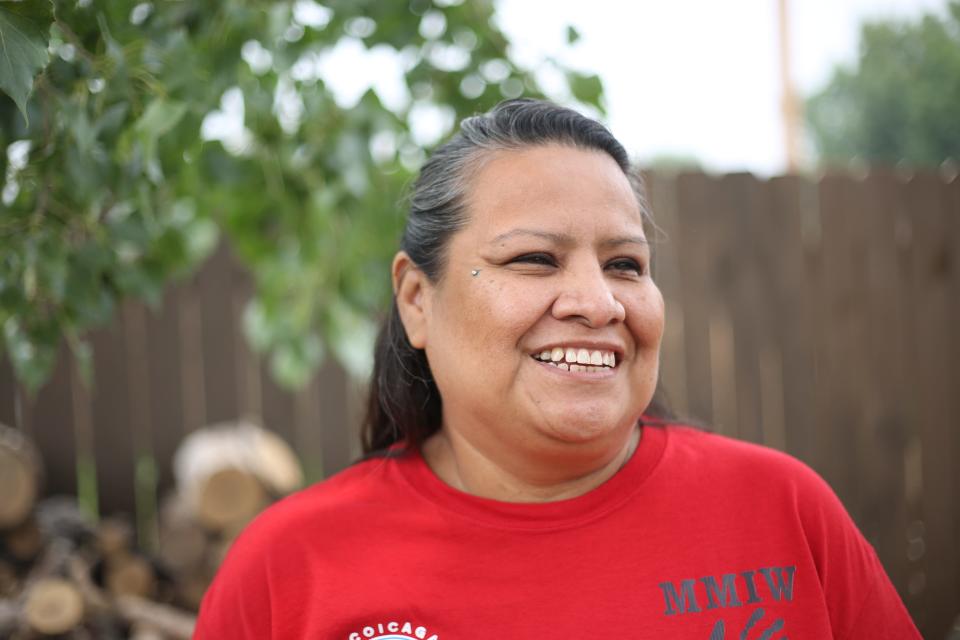
Handboy travels from Eagle Butte to check in on the children, comb their hair, share stories and cultural knowledge with them, and to be another person to talk to. It’s important to her that she offers that lifeline, especially given the importance cultural connections had in her recovery.
"I want them to know that they're loved and that they have a connection to me as an Indigenous person, because I don't think they really have that in Hot Springs," Handboy said. "I want them to have an identity, to be able to connect with their identity and let them know they still belong to our culture, our spirituality and our people."
Some non-Native families say they’re isolated from accessing cultural practices and knowledge for their Native foster or adopted children.
More: Where the money goes: Foster families get paid, relatives caring for children get nothing
Holly Christensen has served as a foster parent in South Dakota, Idaho and Oklahoma. She said South Dakota is the worst at supporting foster families and children and keeping children connected to their tribal cultures.
Christensen participated in her daughter’s Native American graduation ceremony at Washington High School in Sioux Falls this spring, where she and her daughter struggled to understand the ceremonial customs and traditions.
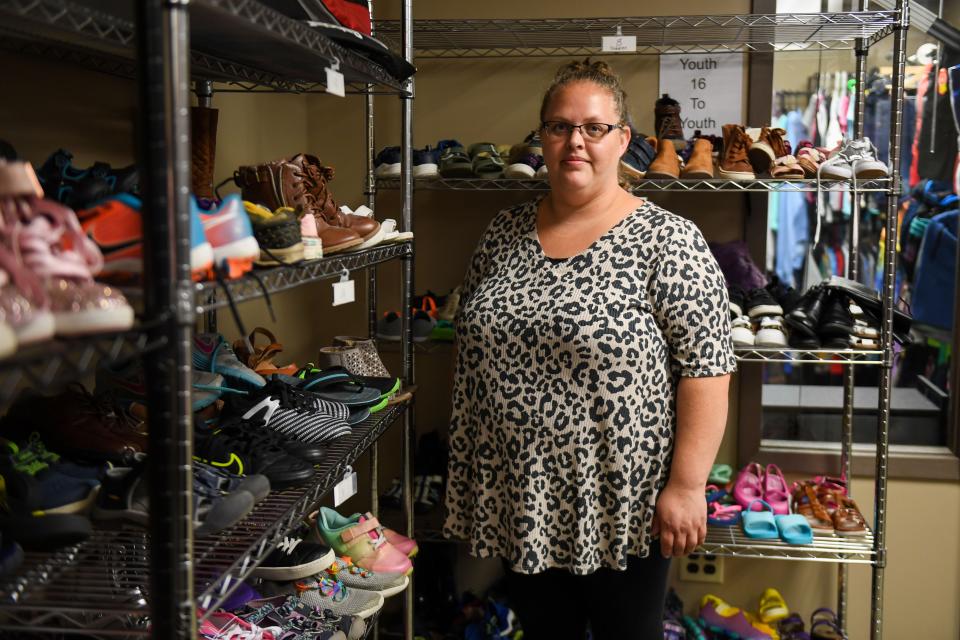
Organizers assumed participating adults were Native and knew what to do, Christensen said. She had to ask other adults questions during the ceremony and felt uncomfortable with the process. The event left her daughter tearful and confused about her identity as a mixed-race, Native American adopted child.
“I’m trying to work so hard to make sure my child fits in that day with everybody else there and she has the same things that everybody else has,” Christensen said. “But yet, when you ask the questions, you don't get answers. When you get an answer, you feel judged.”
Christensen said it would be helpful if Native foster children could have access to their culture, even if it’s through language flash cards, tribal flags or merchandise sent to the child from their tribe. Her daughter has a Comanche flag that helps her remember where she came from in Oklahoma.
How other states have found success keeping Native children culturally connected
Christensen explained while in Oklahoma, the state made it a priority to keep Native kids connected to their culture, with methods including language practice and hosting a statewide powwow for foster families with tribes collaborating on the event.
"Not having that here definitely makes it harder because it would also keep you connected on what's going on within the tribe,” Christensen said.
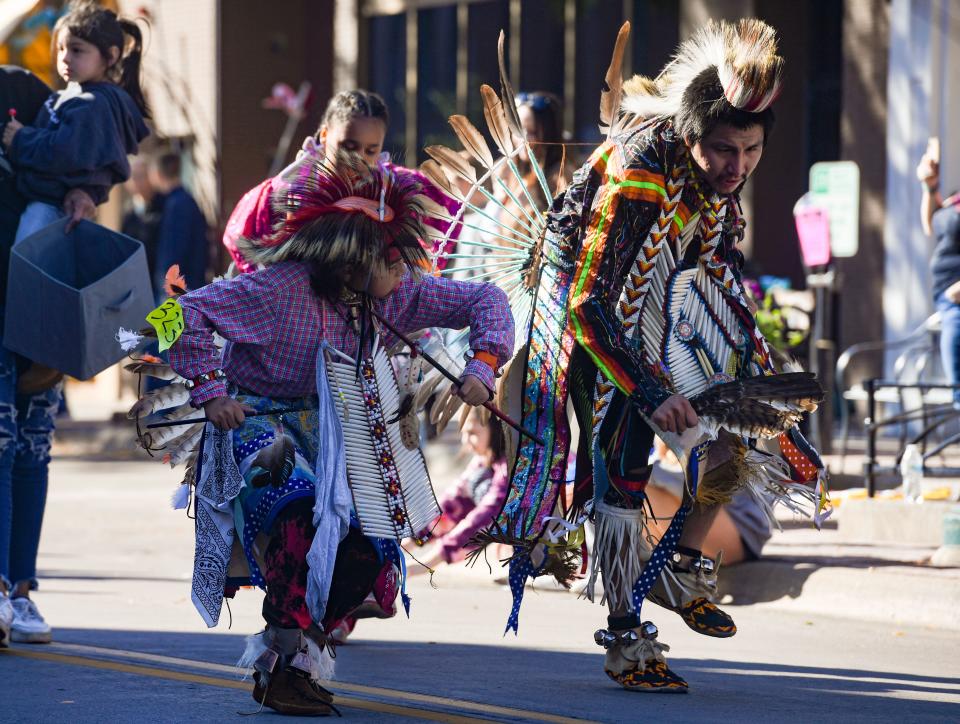
The Oklahoma Department of Human Services has its own tribal program, which acts as a liaison between tribes and the state, said Keitha Wilson, program administrator for the Oklahoma tribal program. In addition to the annual powwow and other events, Oklahoma requires foster parents of Native children to have cultural and Indian Child Welfare Act training.
“Just having that as a foundation or springboard into ICWA, it allows those applying to be foster and adoptive parents to ask questions about how to keep these children connected to their tribe,” said Te’Ata Loper, executive director of Oklahoma Indian Child Welfare Association.
Most of the programming has been funded for the last seven years through a federally-funded ICWA partnership grant with the state working alongside the tribes, courts and child welfare system to improve foster care and ICWA compliance. Oklahoma has had a tribal-state workgroup on ICWA since the early 2000s.
“This work is not fast, but the relationships and commitment are key,” Loper said. “When you have these relationships first, you’re able to have the difficult discussions and make changes.”
South Dakota lacks cultural connection, protective factors
Department of Social Services Secretary Matt Althoff said his department would consider cultural programming if they came at the recommendation of foster families or tribes.
“Those certainly would be things that we would consider in a heartbeat,” Althoff said.
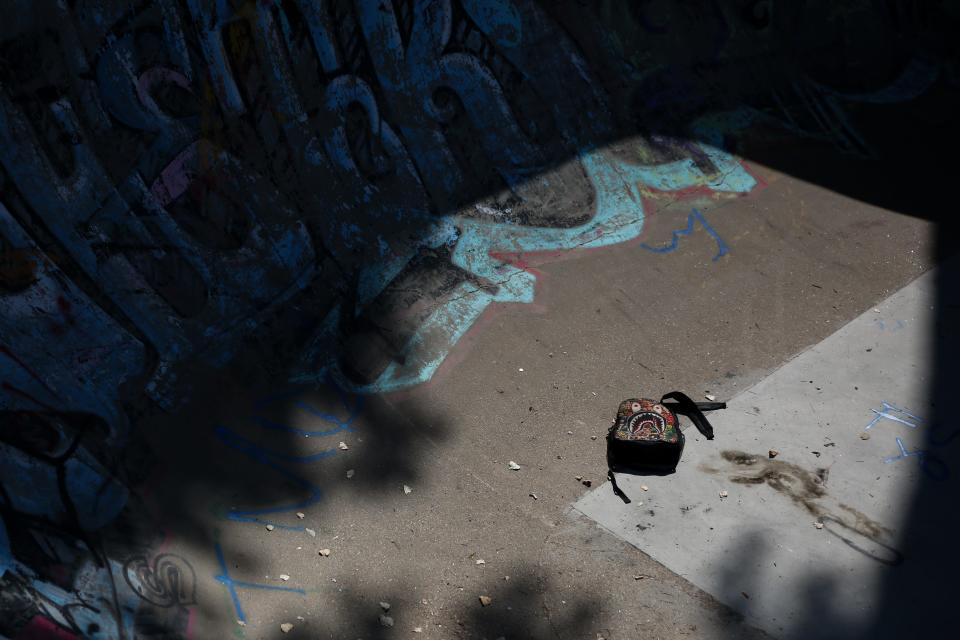
While it’s important that the content and programming come from tribal suggestions, Johnson said, South Dakota must play a part to facilitate such programming.
Because it’s clear the state doesn’t prioritize cultural connections for foster children, she said. She felt cut off from support while raising her children in Kansas City, not having a state worker or a tribal liaison to contact back in South Dakota.
Johnson attended a graduate program for cultural anthropology and has read books regarding Lakota teachings, but she said she is not in a position to teach her boys how to be Oglala Lakota. She attempted to bring them to programming and powwows in Kansas City, but those focused on local tribal customs; not Lakota traditions.
Not much has changed since then, said Johnson, who recently moved back to South Dakota with her husband.
South Dakota does not require foster families to receive in-person cultural training or traditional parenting classes, and the state does not provide cultural programming for its foster children and families.
Instead, the state requires prospective foster parents to listen to a recorded panel discussion about the importance of culture with emphasis on language, identity and ways families can support keeping cultural connections, according to the state DSS. Some Native American foster parents might be referred to specific cultural “Unity” training by tribes.
More: Staffing and funding problems leave tribal child welfare offices scrambling
Simply Smiles foster care, a foster village on the Cheyenne River Reservation that temporarily closed earlier this year, required foster parents receive 70 extra hours of training than what is required by the state, including education about Lakota culture. The village also used trauma-informed and culturally relevant evidence-based methods for mental health evaluations.
State licensing specialists can also connect foster families with resources in their areas for cultural connection, according to the Department of Social Services, such as Red Horse Healing, the Ateyapi mentoring program and Connecting With Our Youth in Rapid City. The state also offers virtual training that can incorporate traditional parenting or cultural programming to foster parents — all of which is optional.
That only scratches the surface, and doesn’t provide enough resources for foster and adoptive parents, Christensen and Johnson agreed.
“The state should make clear to foster parents that it is important that kids be connected to their culture, but you can’t place that all on foster parents,” Johnson said.
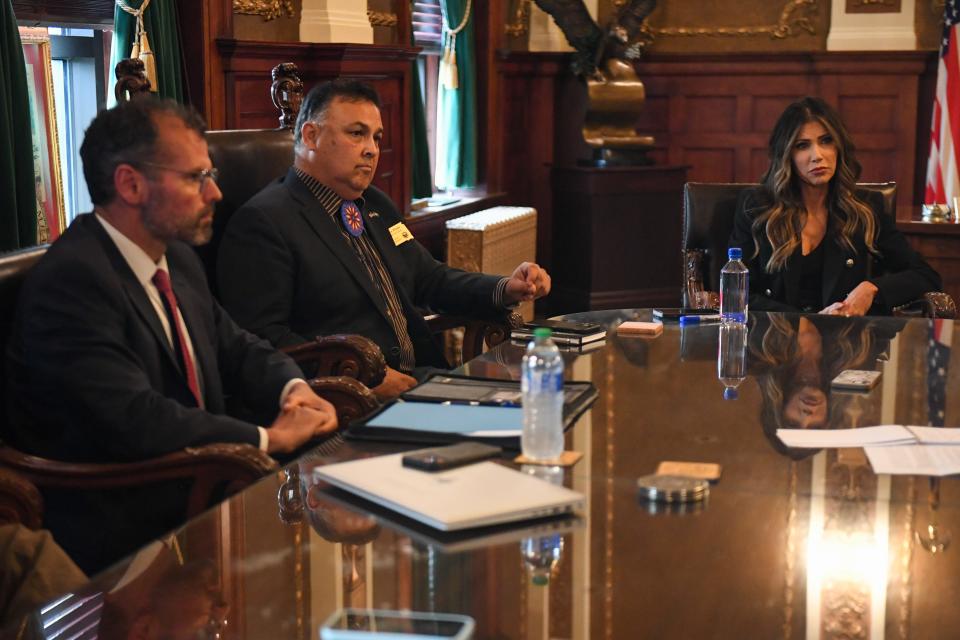
Having families — Native or non-Native, biological or fostered or adopted — take part in cultural parenting classes is a protective factor, Seiber said. The Department of Social Services does host free “Positive Indian Parenting” classes across the state, which are open to foster parents. The course was developed by the National Indian Child Welfare Association for Native parents.
South Dakota Urban Indian Health is taking on the role of providing cultural trainings for foster parents, biological parents, and children in the Sioux Falls area. The health network is teaching the same traditional parenting curriculum, and started a free, weeklong summer camp this year where nearly 70 Native children from the Sioux Falls area, including a handful of foster children, learned about Native American culture on the Lake Traverse Reservation.
The children built tipis and learned about praying, sweat lodges and smudging – the ceremonial burning of sacred herbs, such as sage, to purify a space or person. Boys learned songs on the drum while girls learned about ribbon skirts and how to hoop dance. Seiber said children returned home watching YouTube videos on dances and other things they learned, which motivated organizers to plan more cultural programming for the future.
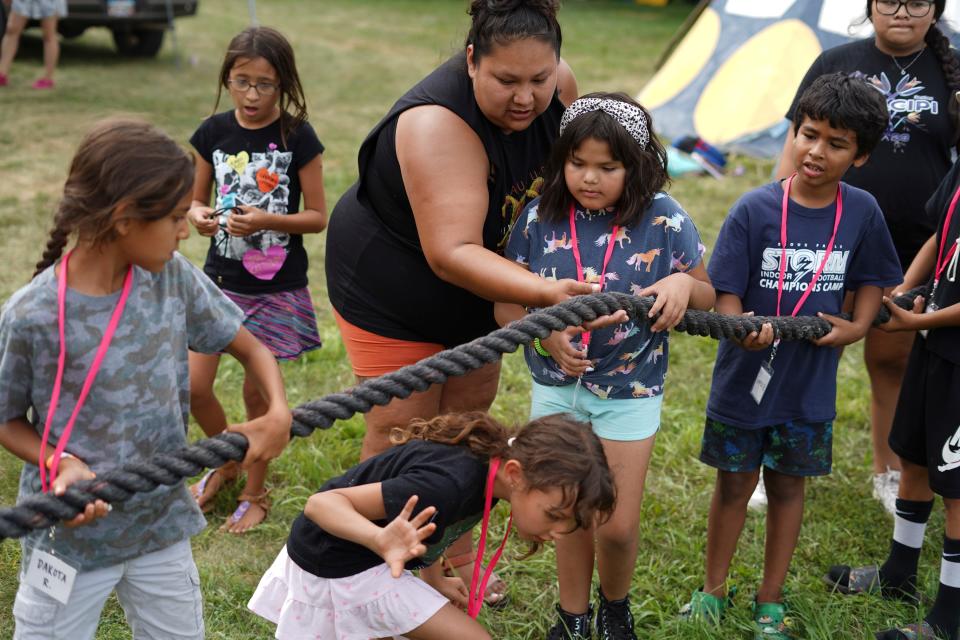
“We honed in on the basics because we know a lot of our kids had never been exposed to the culture or coming together,” Seiber said.
Johnson added those kinds of cultural connections would help non-Native foster families learn more about the history of Native Americans in South Dakota and increase their understanding about the Oceti Sakowin, or the tribes that make up the Great Sioux Nation.
She said she and her boys would have benefitted from such programming: culture camps, in-depth parenting classes and more.
“The state should be motivated to help facilitate these programs coming into practice,” Johnson said. “Whether it’s a hands-off approach just providing funding or it’s offering transportation or facilitating access, that’s what the state needs to do.”
Correction: This story has been updated to accurately reflect that Johnson took cultural anthropology classes, but did not earn a degree.
This article originally appeared on Sioux Falls Argus Leader: Cultural connection for Native children in SD foster care lacking: Foster parents

